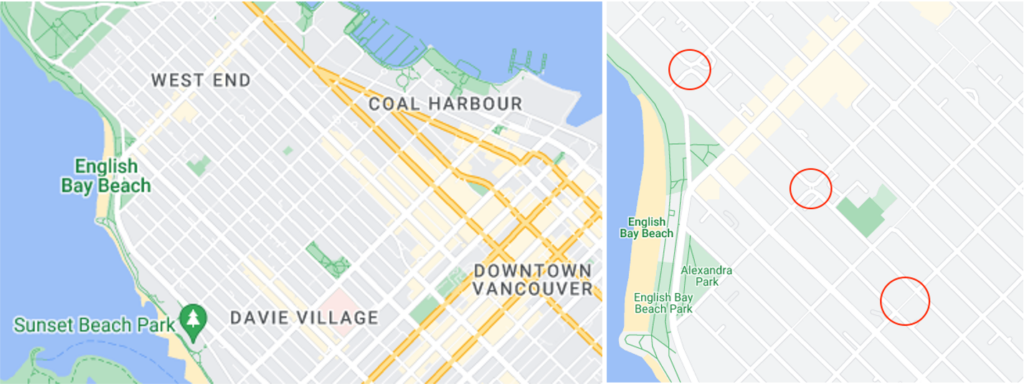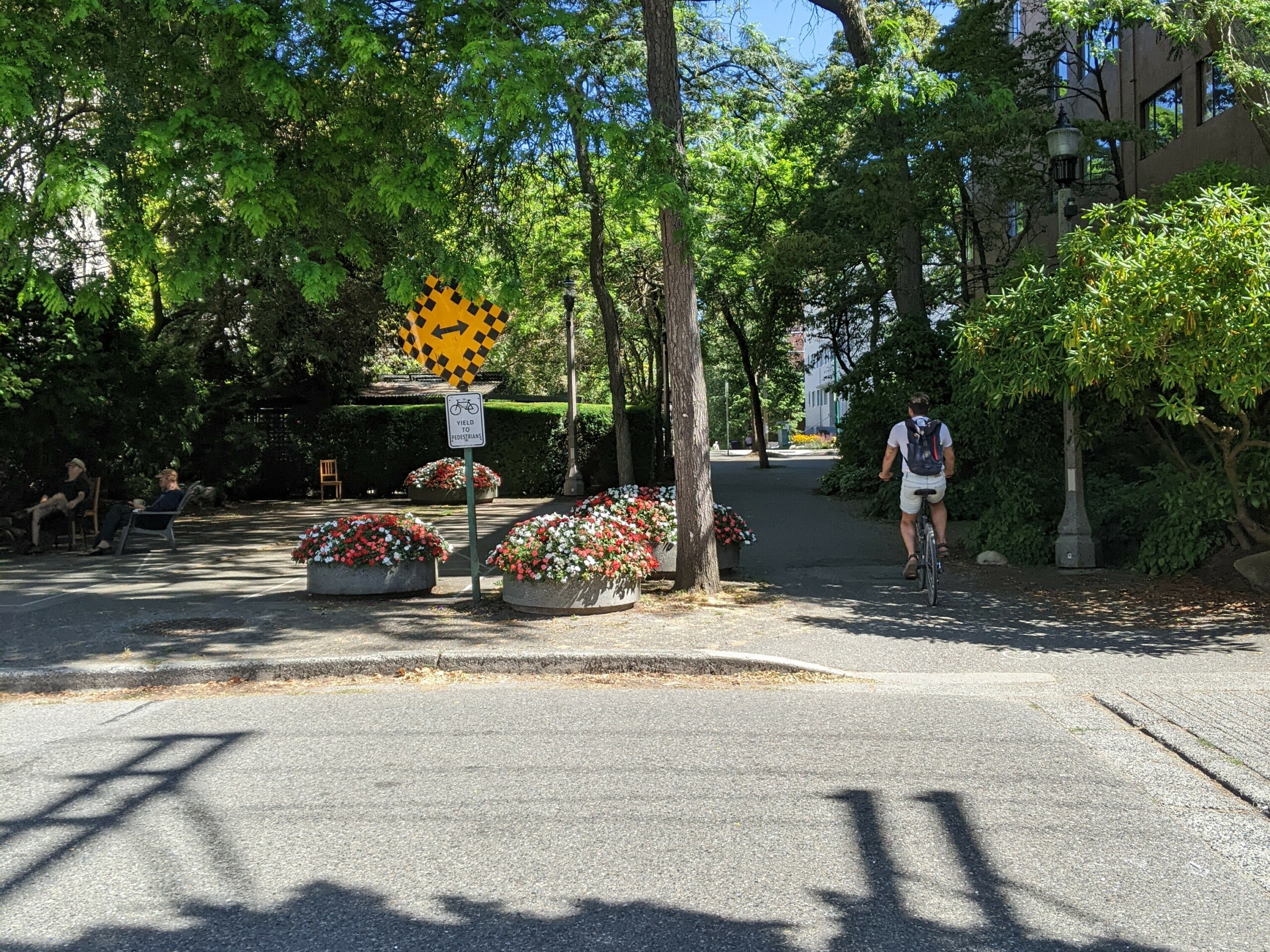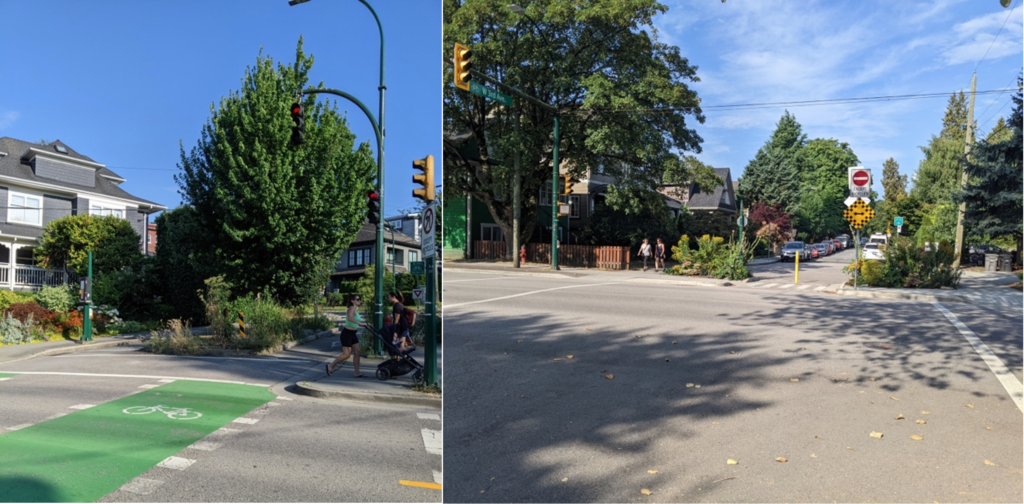Public Spaces
The Low Traffic Neighbourhood in Action: Vancouver, British Columbia
Vancouver, British Columbia, is characterized by peaceful, green neighbourhoods with a street grid that prioritizes pedestrians and cyclists while still allowing access by car. Eric Post explores the strategies employed by the city to keep high-speed traffic off of local streets.
The past two summers I’ve had the pleasure of visiting friends in Vancouver, British Columbia. Not only is it exciting to see old friends and do some sightseeing, but the city is also an urban planner’s paradise with beautiful parks and public spaces, modern architecture, and well-designed streetscapes. While there’s always room for improvement – particularly in the North American context – Vancouver is one of the most cycle-friendly cities in Canada.
After visiting a couple times, I believe a great deal of the city’s success stems from how it plans and designs its local streets using the concepts of low traffic neighbourhoods. Local streets are meant to serve only local traffic, those who live in the area and are coming and going from their home. However, in many cities across Canada, particularly those near main streets and in or around downtown cores, a lack of effective planning and design makes local streets attractive for motorists to cut through, often at high speeds, to avoid traffic lights or congestion. Traffic speed and volume are two of the most important variables in determining the quality of a cycling environment, and Vancouver’s local streets effectively manage both.
At the network level, Vancouver has a very strong grid pattern, a key element for a cohesive, direct, and connected transportation network. However, by examining the street network more closely, we can see that a true grid pattern is only maintained for pedestrians and cyclists, not for motorists. There are several locations where vehicle traffic must turn but active users may continue straight through. This creates a more circuitous and confusing environment for motorists who are not familiar with the neighbourhood while enabling active users faster and more direct travel. The concept is similar to that of curvilinear streets and cul-de-sacs in traditional suburban neighbourhoods but is more space-efficient, direct, and cohesive for users outside a vehicle.

Building on this high-level planning approach, Vancouver has effectively implemented the concept through design with modal filters and traffic diverters that further enhance the environment and makes the streets enjoyable to travel along and even spend time in. The extra space that would otherwise be asphalt is used for pocket parks and greenery, improving public access to greenspace, shade, and seating. Luckily, I got to pass through this pocket park – and many others – every day while visiting my friend a couple years ago.

The application of these types of features is not limited to where local streets intersect. Similar elements can be found at signalized intersections along collector roads, limiting vehicle access points to the neighbourhood to further prevent and discourage through traffic.

While the focus of this article is on traffic volume management and the creation of low traffic neighbourhoods, ensuring slow speeds on local streets is an equally important strategy to making them attractive for cycling. Vancouver has managed to achieve this by combining design elements and 30 km/h posted speeds with modal filters and traffic diverters, which break up long, straight roadways and force motorists to slow down to navigate the network. The City has shown that with integrated network planning and complementary design choices, high-quality neighbourhoods can be created in the North American context that prioritize active modes of travel while accommodating local vehicle traffic.
 ">
">Eric Post
“I believe one of the most effective ways for us to reduce our impact on the environment is to transition to more environmentally sustainable forms of transportation. Building cities where walking and cycling are safe, easy, and enjoyable is a win for all community members and the planet.”

